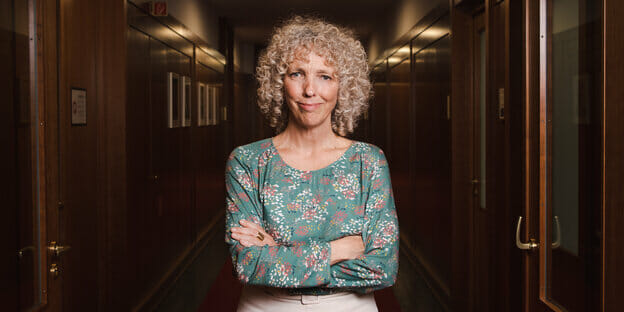Sign up to receive our weekly newsletter
It’s Hurricane Preparedness Week, a campaign led by the US National Oceanic and Atmospheric Administration (NOAA) to encourage the public to “be ready for hurricane season.” Journalists need to be ready too. While the official start to hurricane season is still a month away, NOAA reminds us that in recent years tropical systems have started developing as early as May. Meanwhile, separate new research warns that more and stronger hurricanes are likely in the coming decades as the planet continues to overheat, with the frequency of intense hurricanes and typhoons more than doubling by 2050 in just about every region of the world.
We encourage journalists to go through their own reporting checklists in the coming weeks, with an emphasis on helping the public understand how climate change is worsening hurricanes. A basic familiarity with the burgeoning field of climate change attribution science is essential. Attribution science cannot always conclude that a given hurricane — or, for that matter, a heatwave, such as the deadly temperatures now scorching much of India and Pakistan — was caused by climate change. But often it can calculate how much more likely or severe a given event was made by climate change. In other words, it can attribute how much responsibility climate change has for that event.
Remarkably, scientists can now provide many of these attribution analyses in close to real-time. Check out the work of the World Weather Attribution initiative for recent examples. In other cases, it can take a bit longer — days or weeks — for scientists to crunch the numbers.
Journalists still can — and should — mention the climate connection when reporting on extreme weather. Just take care how you phrase it. While climate change does not entirely “cause” most extreme weather events, these days it is almost always a contributing factor, and attribution science can determine how large that contribution is. For further guidance, see CCNow’s resource, “Your Guide to Making the Climate Connection.” If you’re looking for a quote on the climate connection to a given weather event, the World Meteorological Organization is a good source.
This is an area where too much news coverage has been lagging behind the science. When Hurricane Ida struck the US Gulf Coast last summer, the climate connection was absent from much mainstream coverage. Six of the biggest commercial TV networks in the US — ABC, CBS, CNN, Fox, NBC, and MSNBC — ran 774 stories about Ida from August 27 to 30, according to Media Matters. Only 34 of those stories, barely 4%, mentioned climate change. Similar oversights are plaguing coverage of the heat wave now causing power outages, crop failures, and immense human suffering in South Asia. Manisha Pande, executive editor of the digital media-monitoring platform NewsLaundry, told Carbon Brief that “sustained focus on climate change is completely missing” from Indian television news channels.
As the planet continues to overheat, we owe it to our audiences to make the consequences crystal clear. And don’t forget to mention that there are solutions as well — above all, quitting fossil fuels as soon as possible.
From us
CCNow Q&A. Each month, Covering Climate Now speaks with a different journalist about their experiences on the climate beat and their ideas for pushing our craft forward. This month’s guest is Karyn Pugliese, the new executive editor of Canada’s National Observer, a digital news outfit with a sizable audience that has put climate change front-and-center in its coverage. She spoke with us about Indigenous perspectives on climate and the power of small, dedicated newsrooms. Read it here…
Noteworthy stories
Long dirt road. Democrats don’t have to keep losing elections in rural America and ceding control of Congress and statehouses to climate-denying Republicans, argue two young champions of the Green New Deal. In rural Maine, Chloe Maxmin rejected her party’s advice and drove down one long dirt road after another to listen to conservative-leaning constituents. She ended up defeating the GOP leader of the Maine state senate. By Chloe Maxmin and Canyon Woodward for the New York Times…
Welcome to the Pandemicene. A recent study in Nature finds that rising global temperatures will increase the frequency of pandemics. As animals relocate to cooler climes, they come into contact with species not previously encountered, providing new opportunities for viruses to spread. In an interview on Democracy Now, Ed Yong of The Atlantic said that “many of the greatest existential threats to our world right now — like climate change, the rise of new diseases, and the sixth mass extinction of wildlife — are really all facets of the same problem.”
Carbon negative! Tasmania, an island state of Australia, has made a “remarkable achievement” by becoming one of the first parts of the world to remove more carbon dioxide from the atmosphere than it emits. That’s thanks to a reduction in native forest logging, according to scientists at the Australian National University. By Katri Uibu at ABC News…
Smart solutions. New York residents can find out — and influence — whether their neighborhood is graded as climate-disadvantaged and therefore eligible for some of the aid money derived from the state’s landmark 2019 climate protection law. By Samantha Maldonado at The City…
REPUBLICATION RECOMMENDATIONS
The following stories deserve special consideration for republication by CCNow partners:
- The Kochs’ Dream of Smashing Climate Action May Be About to Come True – VICE News
- How the Oil and Gas Industry is Trying to Hold US Public Schools Hostage – the Guardian, as part of their ‘Climate Crimes’ series with CCNow
- Climate Activist’s Fight Against ‘Terrorism’ Sentence Could Impact the Future of Protests – ABC News as part of the ‘Climate & Democracy’ reporting project
For partner outlets: To submit stories for sharing, please use this form. As always, instructions for republishing and the full list of stories available for republication can be found in our Sharing Library.
Odds & Ends
Air pollution stats. Ahead of summer smog season, SEJ has a primer on data sources for US reporters.
$$$. Mental health media or reporting can win a $3,000 prize; info here. SEJ’s Fund for Environmental Journalism invites grant applications up to $5,000 for climate, environment, and conservation stories in North America.
Jobs. The Washington Post is hiring a climate & weather breaking news video producer/editor, a graphics reporter for climate, and a climate solutions reporter. Climate Home News seeks a deputy editor.
If you have any feedback on this newsletter, or know of information that should be included here, shoot us a note at editors@coveringclimatenow.org

